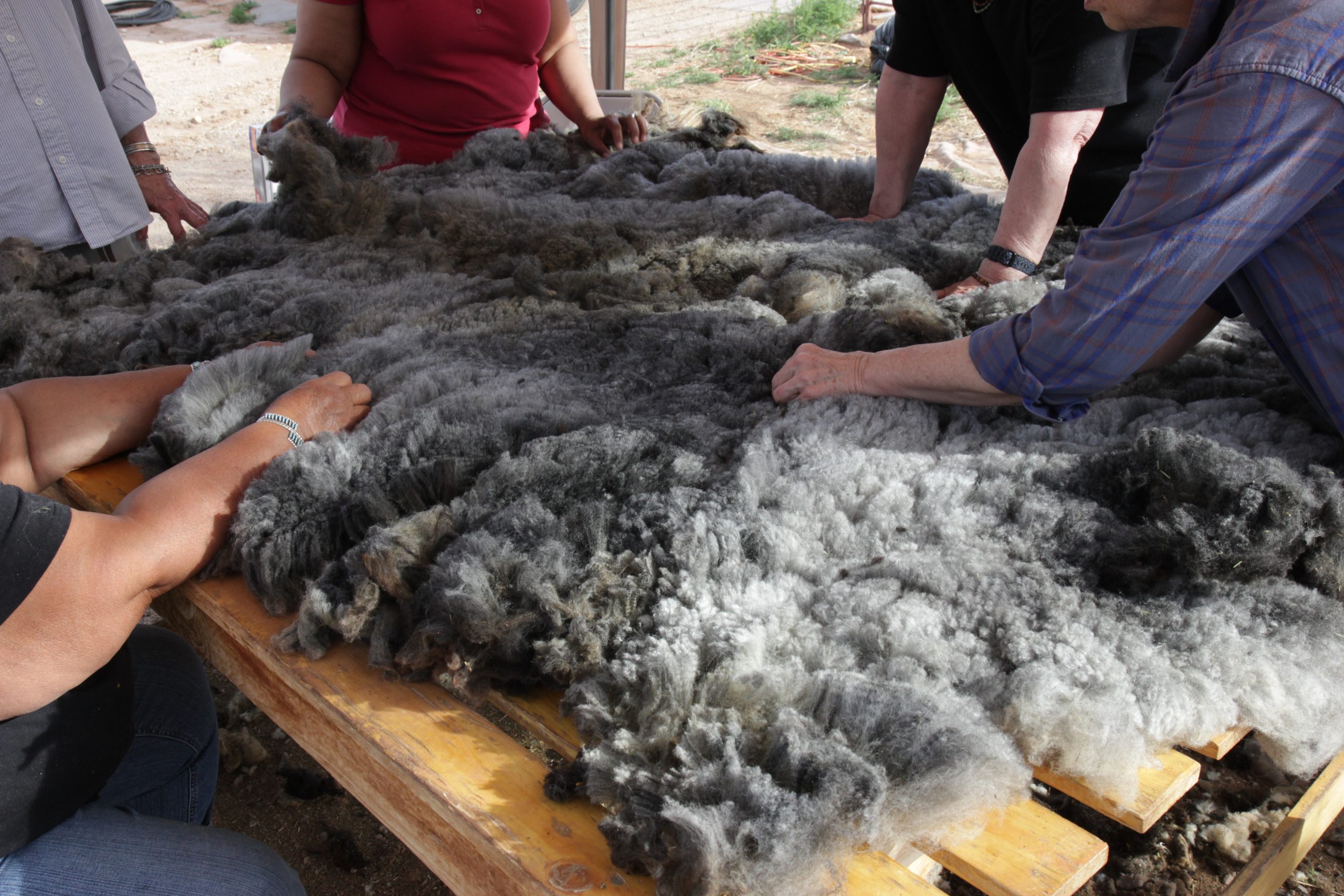Some information may be outdated.
“We had a good year this year,” said Sam Cunningham, owner of Cunnington Farms in Moab, as she loosely combed her fingers through the first bundle of wool at last Saturday’s sheep shearing.
She means it was a cold winter during which her flock of 58 sheep braced themselves for freezing temperatures by growing extra wool, a survival tactic that has the added bonus of producing long coats perfect for spinning into yarn.
Every spring, Cunningham opens her farm to the public for wool enthusiasts, hobby farmers, and curious community members to watch the shearing and partake in the fleece cleaning, a tradition she has upheld for the past twenty-something years.
“I usually come every year to help out with the fleeces,” said Cathy O’Connor, co-owner of Desert Thread, a yarn shop in Moab that sells Cunningham’s products. “It’s such a nice community event. I’ve been buying yarn from Sam for years.”
Cunningham has been raising Tunis, Navajo-Churro, and Romeldale sheep on her three-acre farm on Spanish Valley Drive for 35 years. And over the decades, she has made a name for herself in the artisan wool community.
“My fleeces are stunning because I raise heritage breeds of all colors, and they’re all healthy. People come from all over to buy my wool,” said Cunningham, who welcomed about 30 people to her farm last Saturday.
This year, artisans and yarn sellers traveled from Phoenix, Denver, Salt Lake City, and Grand Junction to buy raw fleeces straight from the source.
“I came here specifically to buy black fleeces,” said Farah Knudsen, who lives in Provo and owns an online yarn shop. “A lot of people don’t raise black sheep because they can’t dye the wool. It’s harder to sell. But when they do that, they make the diversity of the sheep populations smaller.”
Usually, Cunningham turns her fleeces into yarn before selling her wooly goods—for a little bit of extra work, she can sell the yarn for far more.
But this year, Cunningham decided to forego profit in the interest of preserving traditions such as spinning, weaving, and knitting.
“I sold my fleeces for way under market value because these people are serious about wool, and I want to encourage that,” she said, referring to the buyers and other sheep farmers who traveled to Moab for the event. “I want to inspire people to keep using wool, and not just in their gardens for mulch.” (Wool is an excellent way to retain moisture in the soil.)
She sold 43 raw fleeces at the shearing last Saturday and took a significant financial hit, she said.
From about 9 a.m. until 5 p.m., two sheep shearers from Salt Lake City worked tirelessly to shear all 58 sheep. “I’m going to sleep good tonight,” said Dallan Evans as he sat down in the shade for lunch.
While the shearers labored away in the sheep pen, the rest of the people got their hands dirty at the skirting table where mud and twigs were plucked from the perimeter, or the “skirt,” of the fleeces.
“Damn, I got the neck again,” said one woman at the skirting table after the fleece was unrolled, revealing the outline of a sheep’s body. When hay is accidentally dumped on the sheeps’ heads during feedings, bits of vegetation get stuck in the wool and prove nearly impossible to remove.
“Better than the rump!” said another woman standing opposite her at the table who was tasked with pulling dried poop out of the wool.
The shearers were paid, and anyone else who helped out was treated to a home-cooked meal of bison meatloaf, elk roast, and frybread. After lunch, Cunningham took a break from cooking and cataloging the fleeces to survey the crowd.
“I met some of these women when I used to go to fiber fairs, and some are just old friends,” she said. “Used to be a lot more locals.”
As the cost of living in Moab has skyrocketed in the past decade, many of the area’s sheep growers and weavers have left, Cunningham explained.
“I do this every year because I believe in community,” said Cunningham. “I want to keep the tradition alive.”
Appreciate the coverage? Help keep local news alive.
Chip in to support the Moab Sun News.





